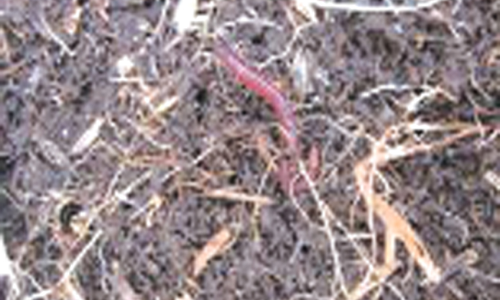Live
- SP Gaikwad inspected the Telangana Amarnath Saleswaram Jatara yatra arrangements
- Rahul Gandhi's decision to contest from Wayanad shows 'lack of confidence': BJP President Nadda
- IPL 2024: Delhi bowlers will go after all of SRH’s top-order batters, says head coach Ricky Ponting
- At Amroha rally, PM Modi sends out ‘meaningful’ message for Muslims and Hindus
- Tripura records highest 79.83 pc voter turnout in Northeast
- The government has to clear the confusion
- UP: Police officers, govt doctors to appear virtually in courts
- White tigress Sneha dies at Nandankanan zoo
- World Liver Day 2024: Follow these easy lifestyle tips to cleanse and maintain a healthy liver
- Scholarships For Students
Just In

What You Do Fold the paper towel in half and then in half again into a square Get the paper towel square wet and then gently squeeze it out It should be wet but not dripping
What do worms do? Why are roots important? Do we really need either of them? You might be surprised by what you’ll find out about these two simple things!
What You Do: Fold the paper towel in half and then in half again into a square. Get the paper towel square wet and then gently squeeze it out. It should be wet but not dripping.
Place the wet paper towel into the plastic bag. With the bag laying flat, place 3 or 4 seeds between the plastic bag and the paper towel. They should be in a row near the center of the bag. Use a dropper to add a couple drops of water to the paper towel just above your row of seeds.
Close the top of the bag keeping a space in the middle unzipped. Tape the two closed sides of the top of your bag so a window that gets a lot of sunlight. Make sure the seeds face outside (towards the sun). Carefully lift the bottom of the bag up to peek at your seeds each day.
Depending on what kind of seeds you planted, they should sprout within a few days or a week. (Our sunflower seeds began to show roots after just three days!)
What Happened: Seeds need certain conditions in order to start growing. Until it is in the right conditions, the seed is dormant – it’s kind of like it is asleep. When the seed has everything that it needs to start growing (warmth, oxygen, and water), it will “wake up” and sprout, or germinate. Once the seed germinates, it will begin growing roots going downwards and a stem going up. As the plant continues to grow, it needs sunlight, oxygen (from the air), water, and nutrients from soil.
Check on your seeds each day and notice how quickly the roots grow once they appear. At first they might just grow as one root that keeps getting longer, but after a few days, it will likely start to have other little roots growing in different directions.
Those additional roots help the plant reach more soil to find water and nutrients and also help keep the plant stable, so it won’t easily fall over or be pulled out of the ground. Even though your seeds aren’t in soil, the roots know they need to grow that way.
After about a week, you can carefully take the tiny plants out of the bag and plant their roots in the ground outside or in a pot with potting soil if you want to continue watching the plants grow.
How Do Plants Drink? You can watch a root (a carrot) “drink” up water with this easy experiment. What You Need: Carrot, Glass of water, Blue food coloring, a sharp knife & a cutting board, an adult to help. What You Do: Mix a few drops of the food coloring into the glass of water. Place the carrot in the water. After a few hours, pull the carrot out and have an adult cut off a small section near the tip.
Look at both the carrot and the piece that was cut off. You should see blue dots on the inside of those two pieces. What Happened: The blue dots show where the water is being carried through the root. A plant’s roots bring water and nutrients up to its stem and leaves through hollow tubes.

© 2024 Hyderabad Media House Limited/The Hans India. All rights reserved. Powered by hocalwire.com







